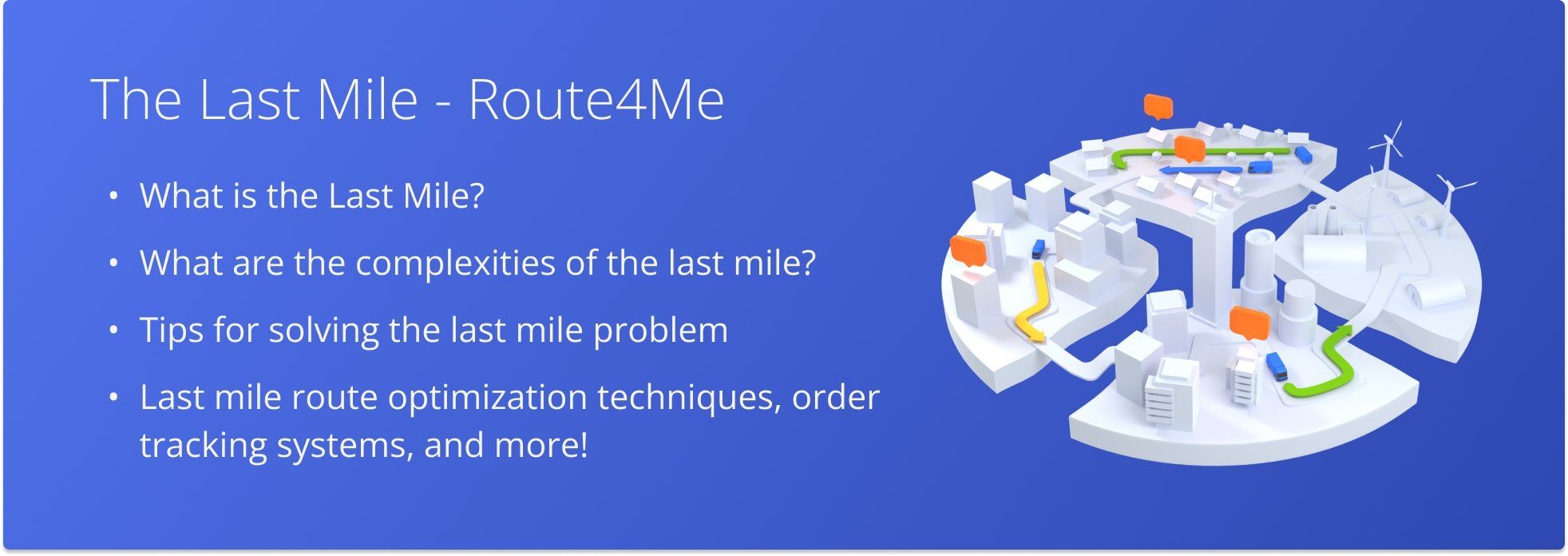The Last Mile
On this page, you can learn what the Last Mile is and why it’s so important to the customer.

What Is “The Last Mile”?
The customer may not know all the intricacies of the organization of the logistics process. He is not interested in the scheme of stacking boxes, the process of loading cargo into the truck, he does not know that you can do the arrangement of cargo online. It is important to him in what condition and in what time frame the order will arrive to him personally. By this stage, the buyer usually evaluates the delivery process as a whole. It is the “Last Mile” that is responsible for whether or not the buyer will contact the transportation company again. After all, it is the only one that is visible to the customer.
Any, even the most perfect job can be overridden by poor service. Conversely, excellent service and the company’s willingness to work on its mistakes will help, if not completely, then significantly mitigate the negative customer experience.
At the same time, organizing delivery from warehouse to door is a very costly process both financially and in terms of time. And that’s not all. Here are the main challenges faced by transportation companies.
What Are The Complexities Of The “Last Mile”?
The last mile problem is due to the fact that the last mile is the most expensive step in the entire logistics process. In fact, it accounts for 53% of the total cost of delivery. Here are the main complications:
- Time and financial costs;
- Human Factor;
- Speed;
- Active Demand;
- Transportation accessibility of the area;
- Popularity of the service.
Let’s break them down in detail.
Time and financial costs
The courier delivers a huge number of orders every day. This is an additional cost to the delivery for gasoline, lifting to the floor, additional charges for urgency or specificity of the order, etc. д. Sometimes, if it is, for example, the delivery of furniture, so in addition to the courier requires payment for the labor of the loader.
Human factor
For the customer, the face of the transportation company is the courier. Again, the buyer may not know where or how correctly the pallet was positioned in the truck to ensure that the order arrives safely and securely. But the fact that the customer will turn to TC again, 90% depends on the courtesy, attentiveness, friendliness and willingness to help the courier.
And that’s not all the components of the human factor. Due to weather conditions, traffic situation, holidays, the courier may be delayed. Or come over when the buyer isn’t home. We’ll have to go back, and that’s also an extra expense.
Speed
The question “how quickly will I receive my order” is one of the decisive ones when choosing a supplier company. And on how efficiently the logistics chain will be built, how quickly the courier will deliver the order and meet expectations depends on whether the company’s services will be used again.
Active demand
There is a saying that under the new year, any, even the most reliable logistics company can fail. It’s true, during the holidays and big discounts, the workload increases and therefore the likelihood of errors increases as well.
Transportation accessibility of the area
Even in the central region of Russia there are settlements, the travel time to which can be several hours on broken roads. The cost of delivery and the amount of time spent increases accordingly.
Popularity of the service
Home delivery of groceries and other purchases increased in popularity during the pandemic. And after people, appreciating its convenience, prefer to order home deliveries. But this also means a significant increase in the burden on the couriers of the transportation company.
Tips For Solving The Problem
Yeah, there are problems. But there are also solutions that make it possible to eliminate them, if not completely, at least partially, and thus significantly improve the quality of service in general.
The last mile problem is usually solved through route optimization techniques that result in reduced mileage, fuel consumption, and operating hours.
Shippers have the option to place a load in a truck online. It is very convenient and allows you to reduce time and deliver the cargo safely and securely. Similar services are also being developed to optimize and secure cargo delivery in the Last Mile.
Holidays and events like Black Friday, Cyber Monday don’t come suddenly. This means that you can think of a whole range of measures to reduce the burden of couriers – from hiring temporary employees to offering customers to pick up orders from delivery points on their own.
Developing an order tracking system will increase the level of trust in the transportation company, as well as understand the actual delivery time in real time.
Last Updated: